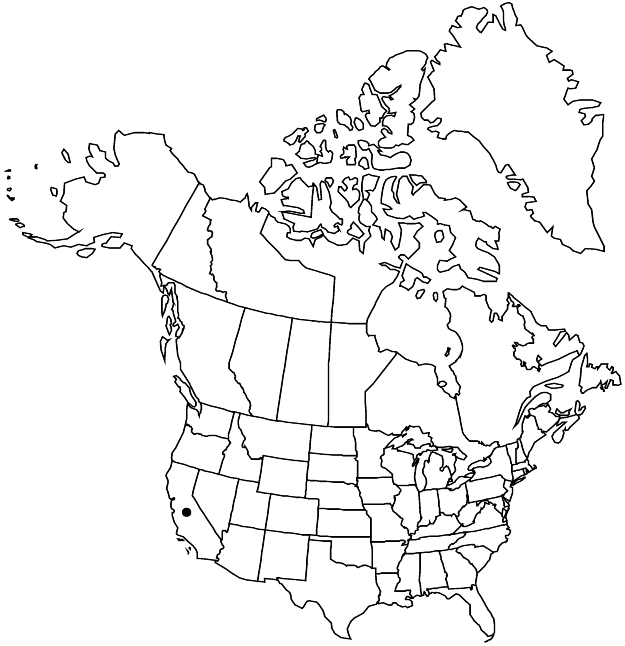Paronychia echinulata var. echinulata
Plants annual; taproot filiform to slender. Stems erect or ascending, often basally branched, 3–20(–38) cm, retrorsely pubescent throughout. Leaves: stipules lanceolate, 1–3 mm, apex acuminate, entire; blade elliptic to oblong, 3–7 × 1.5–3.5 mm, granulose, leathery, apex shortly mucronate, glabrous. Cymes axillary, 3–12-flowered, subsessile, congested, in clusters 3–5 mm wide. Flowers 5-merous, short-campanulate, with prominent hypanthial bulge and calyx somewhat flaring distally, 2–2.5 mm, moderately pubescent with hooked hairs proximally; sepals red-brown, often finely striped or mottled, white distally, veins absent, obovate to oblong, 0.7–1 mm, leathery to rigid, margins white, 0.1–0.2 mm wide, papery to scarious, apex terminated by awn, hood prominent, broadly rounded, awn widely divergent, 0.6–0.9 mm, conic in proximal 1/3 with yellow, ± scabrous spine; staminodes filiform, 0.5–0.6 mm; style 1, split in distal 1/5, 0.4–0.5 mm. Utricles ± globose, 0.8–0.9 mm, minutely papillose distally. 2n = 10, 14, 24, 28 (all Europe).
Phenology: Flowering spring.
Habitat: Disturbed clay soil
Elevation: 20-30 m
Distribution

Introduced; Calif., s Europe, w Asia, nw Africa.
Discussion
Variety echinulata is the only Paronychia introduced to North America from the Old World and is known from a single collection in Stanislaus County (P. Allen, in 1968, UC).
Selected References
None.